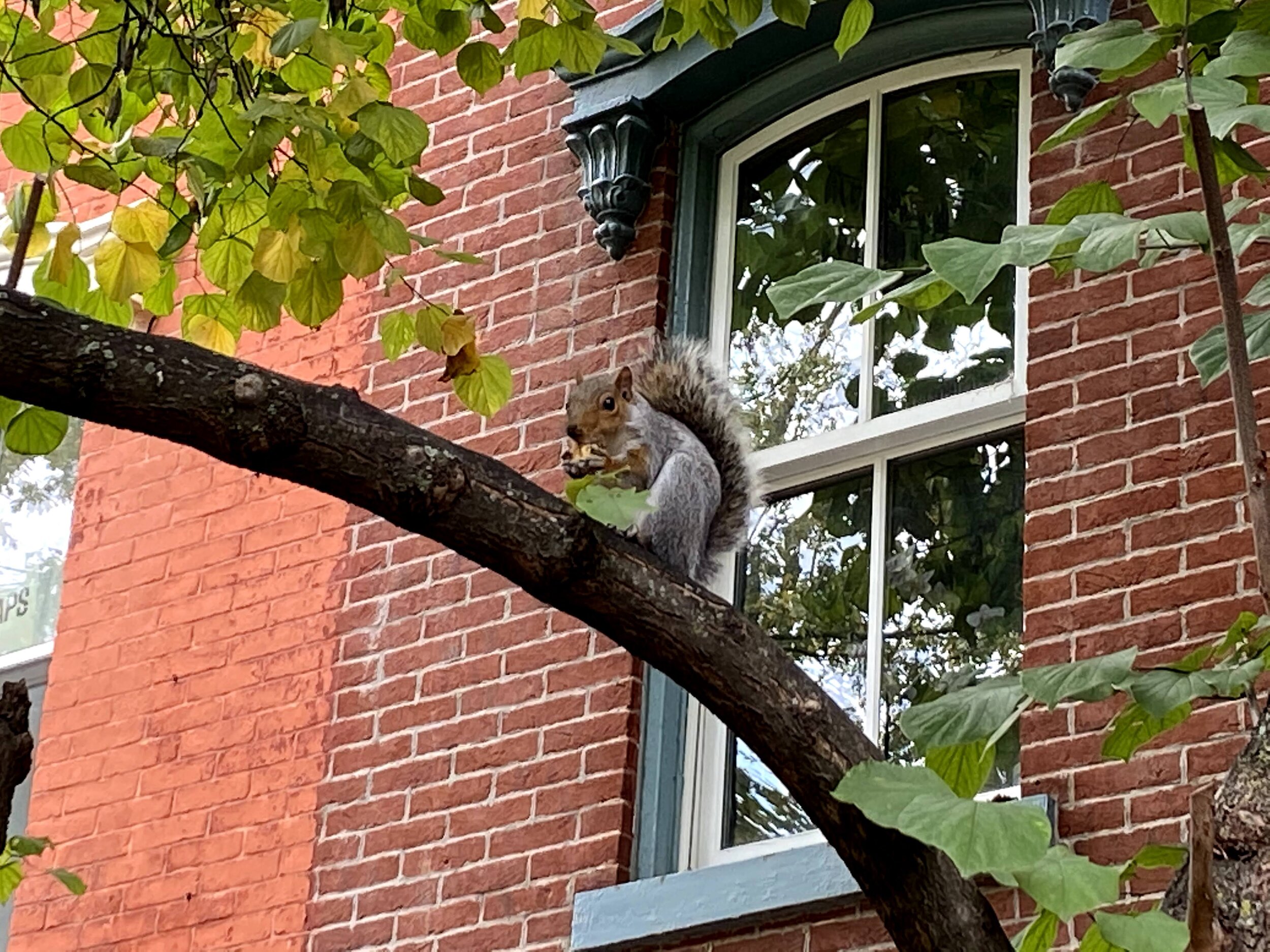My spirit animal
Photo credit: Yantar Yoga
I’m not sure if I have a spirit animal, but if it do I think it just might be a squirrel. Why? For as long as I can remember I’ve had an unexplainable affinity towards these friendly, furry creatures. Especially in DC they are so ubiquitous that I get to see them every day and even entice them to my back yard with some delicious pumpkin seeds. They do steal my peppers and strawberries, but I love them nonetheless. American grey squirrels are also considerably less shy than their red-furred European cousins. As the spring is getting near, my neighborhood squirrels are becoming more active, frolicking in full force. I certainly feel ready to join them after months in pandemic lock-down!
What qualities do squirrels and I share, might you ask? After all, spirit animals are supposed to represent some traits of the person they share a connection with. Well, I am a huge fan of nuts of all kinds so there is that. Love of trees and parks would be another. Active lifestyle. Curiosity. Fear of dogs. In the context of yoga philosophy I discovered another uncanny connection, though. Patanjali’s definition of yoga in Yoga Sutra 1.2 “Yogas-citta-vrtti-nirodhah” means cessation of the fluctuations of the mind. The word vrtti (fluctuation, literally whirlpool) caught my attention and I began to wonder about its etymology. In that inquiry I was inspired by a squirrel as unlikely as it sounds..
In Polish the word for squirrel is wiewiórka - and something like that in other Slavic languages (e.g., vjeverica in Serbian) and also in Persian (varvarah). Wiewiórka - vrtti, the shared “vr” part intrigued me. I looked up the etymology and was surprised to discover that it’s very old, going back to the Proto-Indo-European root *ṷer- meaning “to wiggle, squirm.” Contemporarily Polish verb wiercić means “to drill” and its reflexive form wiercić się means “to rapidly move around” and you may use it to describe a child that just can’t sit still. A squirrel has double that *ṷe(r)ṷer- energy of constantly being in motion. Its attention span most of the time is the opposite of the yogic mental calm - it’s the whirlpool of activity. But squirrels are also capable of pausing their dynamic nature. Many a times, especially on a hot summer day, I see them lounging on my fence, fully relaxed and calm, not a care in the world. Meditating?
I was also fascinated to learn that in the Norse mythology (yes, I’ve been rewatching Vikings during COVID) - a squirrel carries cosmological meaning. In Poetic Edda, the 13th century collection of Old Norse Poems, a mythical squirrel called Ratatoskr, meaning "drill-tooth," runs up and down the world tree Yggdrasil to carry messages between the eagle perched atop and the serpent who dwells below. Yggdrasil is an immense sacred tree around which exists all else. In this mythical tale Ratatoskr is a trouble maker who spreads gossip provoking the eagle and the serpent. But even gossip can carry kernels of truth and wisdom. That’s how I choose to think about Ratatoskr: a spark of energy connecting the heavens and the netherworlds.
My squirrel tale wouldn’t be complete without investigating the etymology of the English name as well so here we go. “Squirrel” comes from shortening of Old French esquireul, from a diminutive of Latin sciurus, from Greek skiouros, from skia ‘shade’ + oura ‘tail’. Shadow-tailed - I like it. To close with another spiritual connection, I also found this beautiful poem by St. Francis of Assisi:
The Sacraments
I once spoke to my friend, an old squirrel, about the Sacraments
he got so excited
and ran into a hollow in his tree and came
back holding some acorns, an owl feather,
and a ribbon he had found.
And I just smiled and said, “Yes, dear,
you understand:
everything imparts
His grace.”
